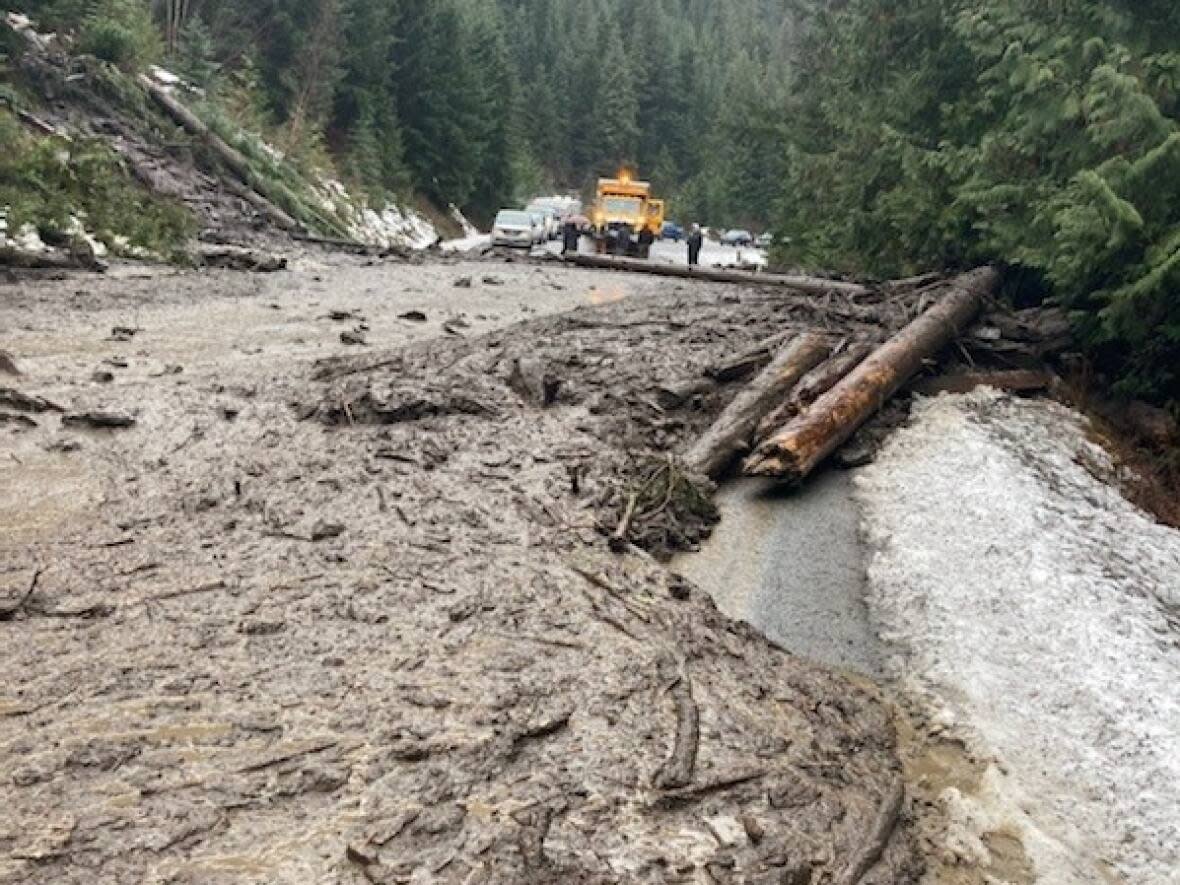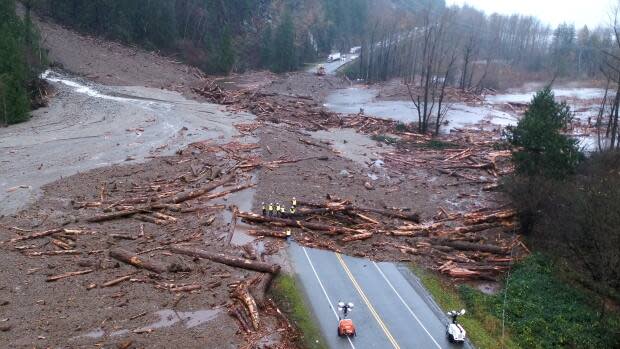B.C. forest conservationist warns of increased risk of landslides from logging

A B.C. conservationist and forest management expert is sounding the alarm about logging and climate change, with a warning that logging roads built on hillsides can increase the frequency and severity of landslides.
Concerns have been raised in the past by B.C.'s independent watchdog for forestry management practices about unsafe logging roads being built.
The issue is becoming more pressing as weather becomes more severe and accessible timber is depleted, causing logging roads to be built on ever steeper terrain, says Peter Wood with Canopy Planet.
"Increasingly, the logging industry is having to go into more and more extreme situations to log because they are running out of available timber in less extreme areas."
Wood says roads built on a slope interrupt the natural flow of water. Running water can accumulate on these roads and can trigger landslides if there is not sufficient drainage.
The destructive power of landslides was made apparent in recent weeks, when extreme rainfall triggered mudslides across the province, severing transportation routes, damaging homes and causing five deaths.
Landslides that result from logging roads in remote, sparsely populated areas, also remain a concern. When logging operations take place in community watersheds, resulting landslides can cause water contamination.
According to Wood, eroded soil and debris can also flow into the gaps of gravel beds in streams that salmon rely on for spawning. If these gaps get filled with sediment, the eggs that are being laid can get washed away. Or, if the eggs are already laid, the sediment can smother them.
Soil develops very slowly on steep slopes, and landslides can reset these ecosystems that have been in development for thousands of years, Wood says.
The Forest and Range Practices Act (FRPA), which governs forestry on public lands, says foresters must ensure that timber harvesting and road construction "do not cause a landslide that has a material adverse effect" on a list of items that include soils, water, wildlife and cultural heritage resources, among other things.

Tree removal contributes to risk
Tree removal itself, particularly clearcut logging, also increases the risk of landslides. Wood said that when trees are cut, an intricate underground network of tree roots, fungi, and microbes are disrupted. When healthy, these root structures act as scaffolding to hold the soil in place, he says.
"It's basically the underground infrastructure that holds the soil together."
The B.C. Ministry of Forests, Lands, Natural Resource Operations and Rural Development acknowledged in a statement to CBC that logging practices increase the risk of flooding.
"In general, any stand-replacing disturbance, be it through harvesting, wildfires or mountain pine beetle, can contribute to flooding because they create soil conditions less conducive to absorbing water."
The statement said forest professionals are required to conduct a field assessment to evaluate terrain stability and potential impacts before logging or building a forest service road. They must "consider the recommendations" of the assessment and "prescribe measures to reduce the likelihood of post harvest related landslide."
Gaps in legislation
The Forest Practices Board, B.C.'s independent watchdog for forestry management practices, conducted an investigation in 2015-2016 on logging roads built on steep terrain. They found that a number of permit holders were "not following the standards of professional practice or complying with legislation, resulting in unsafe roads."
Of 26 road segments that were examined, the investigation found only 12 had "adequate drainage structures in place to handle the expected flows and reduce the potential for future harm to the province."
Kevin Kriese, the chair of the Forest Practices Board, said while the provincial regulations clearly state that logging companies must take steps to prevent landslides, they're not too specific on how.
"The regulations seem to be fairly good, but during their implementation there were gaps ... there is discretion in how that is to be implemented," said Kriese.
Kriese said while some of the board's recommendations that resulted from this investigation were implemented by the province, there are still outstanding issues that have yet to be addressed.
The board has requested the government consider developing legal requirements for the construction of roads located on terrain with slopes greater than 60 per cent or on slopes that are otherwise unstable.
In response, the province said while the ministry has been reviewing resource road legislation, "It would be presumptive at this time to suggest specific legislative changes," due to an ongoing broader review of forestry professional practices.
Younes Alila, a UBC professor in the department of forest resource management, said there are steps that can be taken to mitigate the risk of landslides while logging sustainably, such as putting a moratorium on logging on steep terrain, curtailing clearcut logging, and invoking a threshold on logging in a watershed.
"The time is now for a paradigm change in the way we do forest management in British Columbia."


